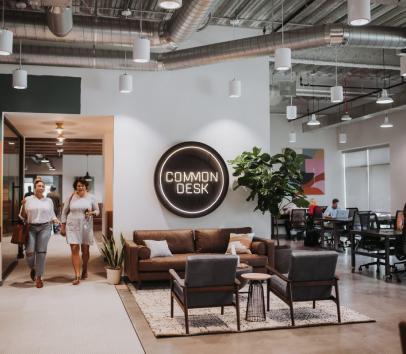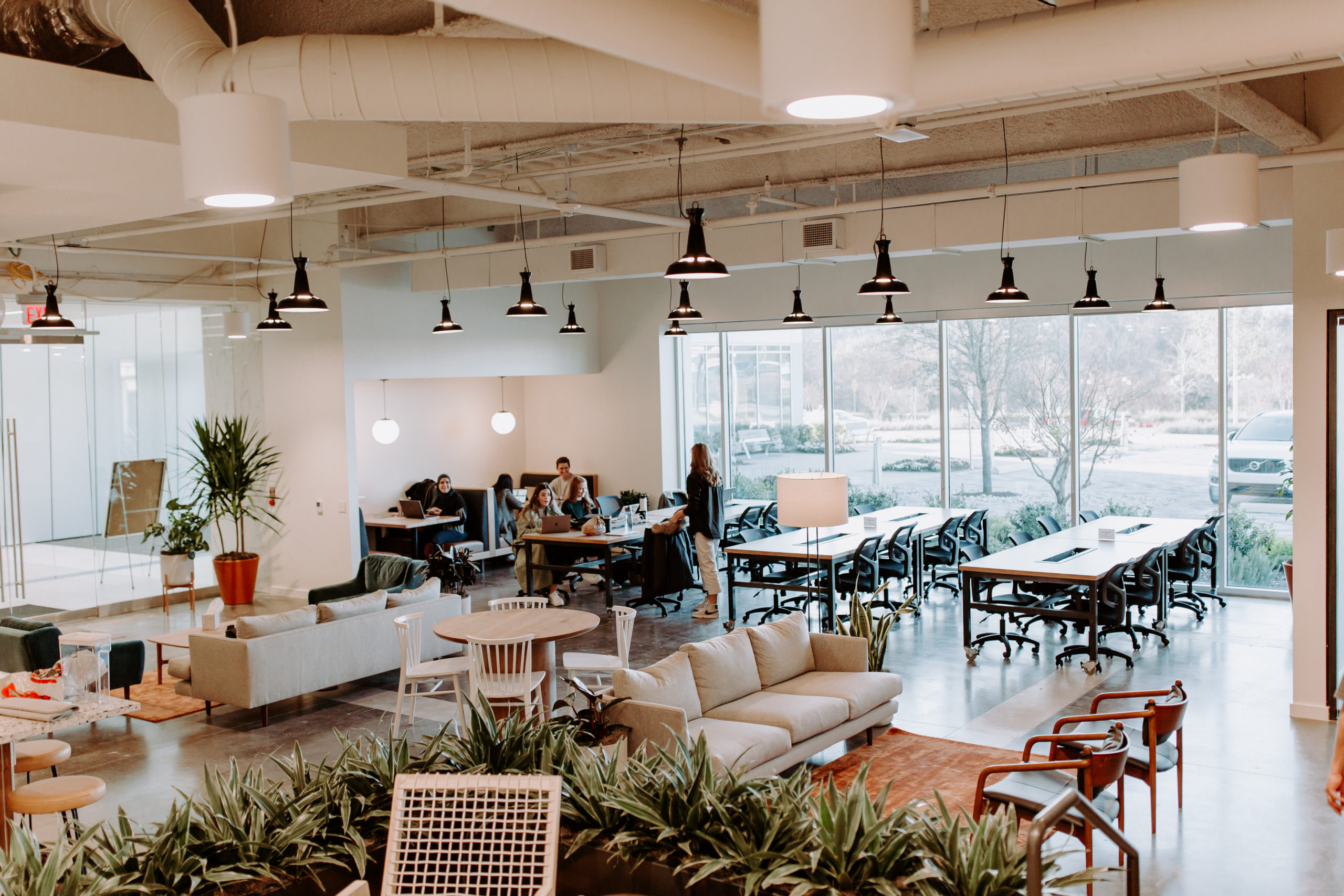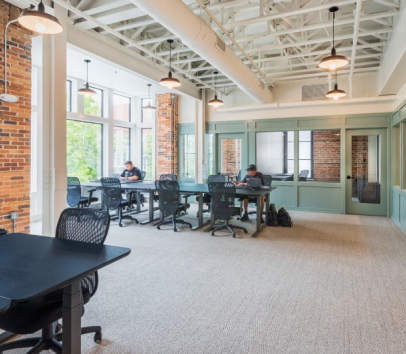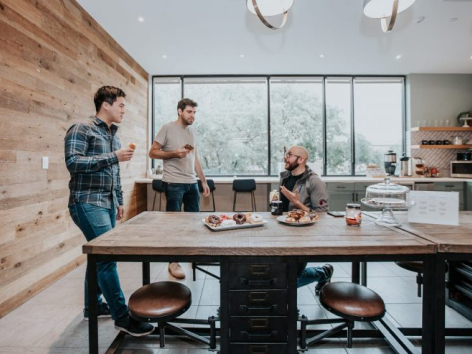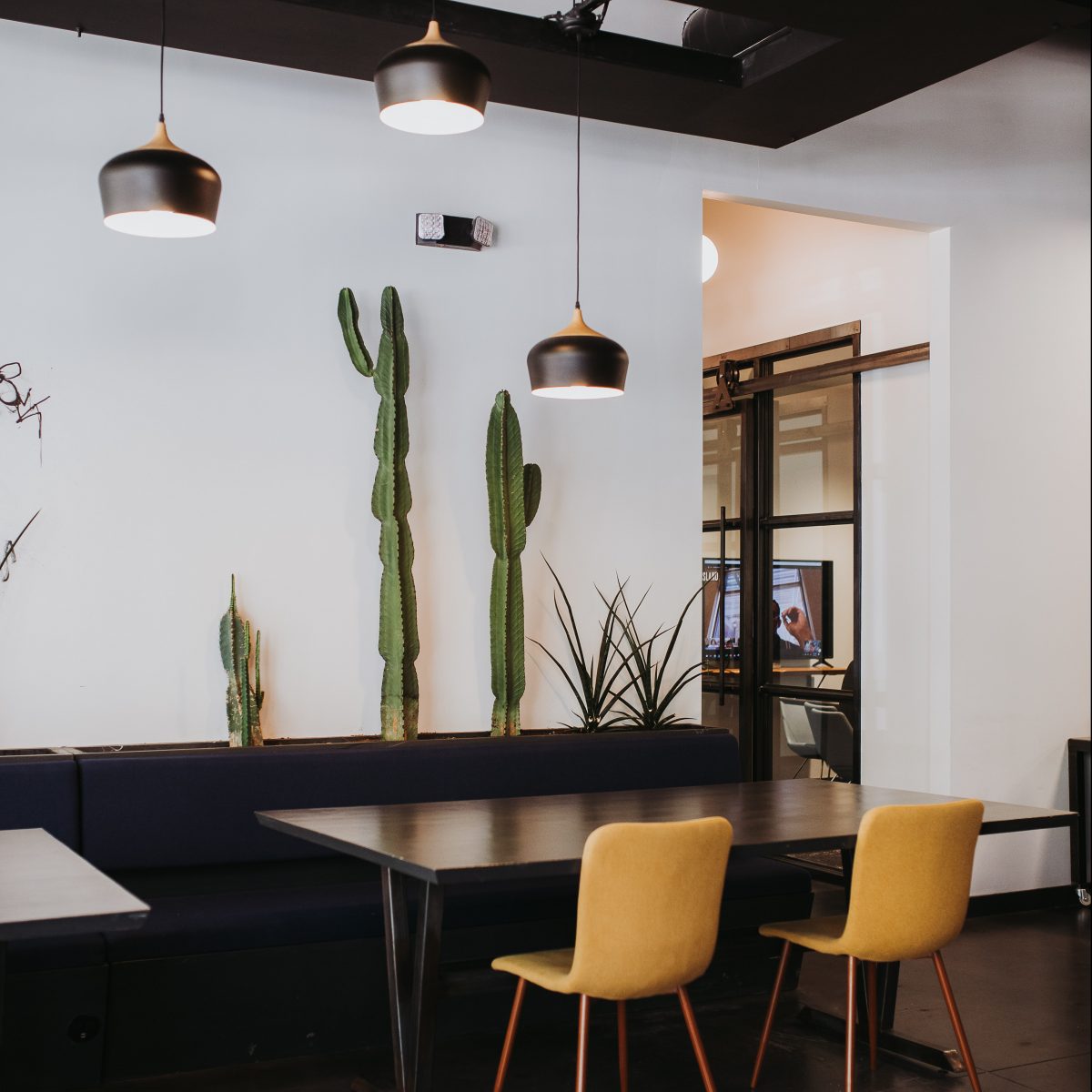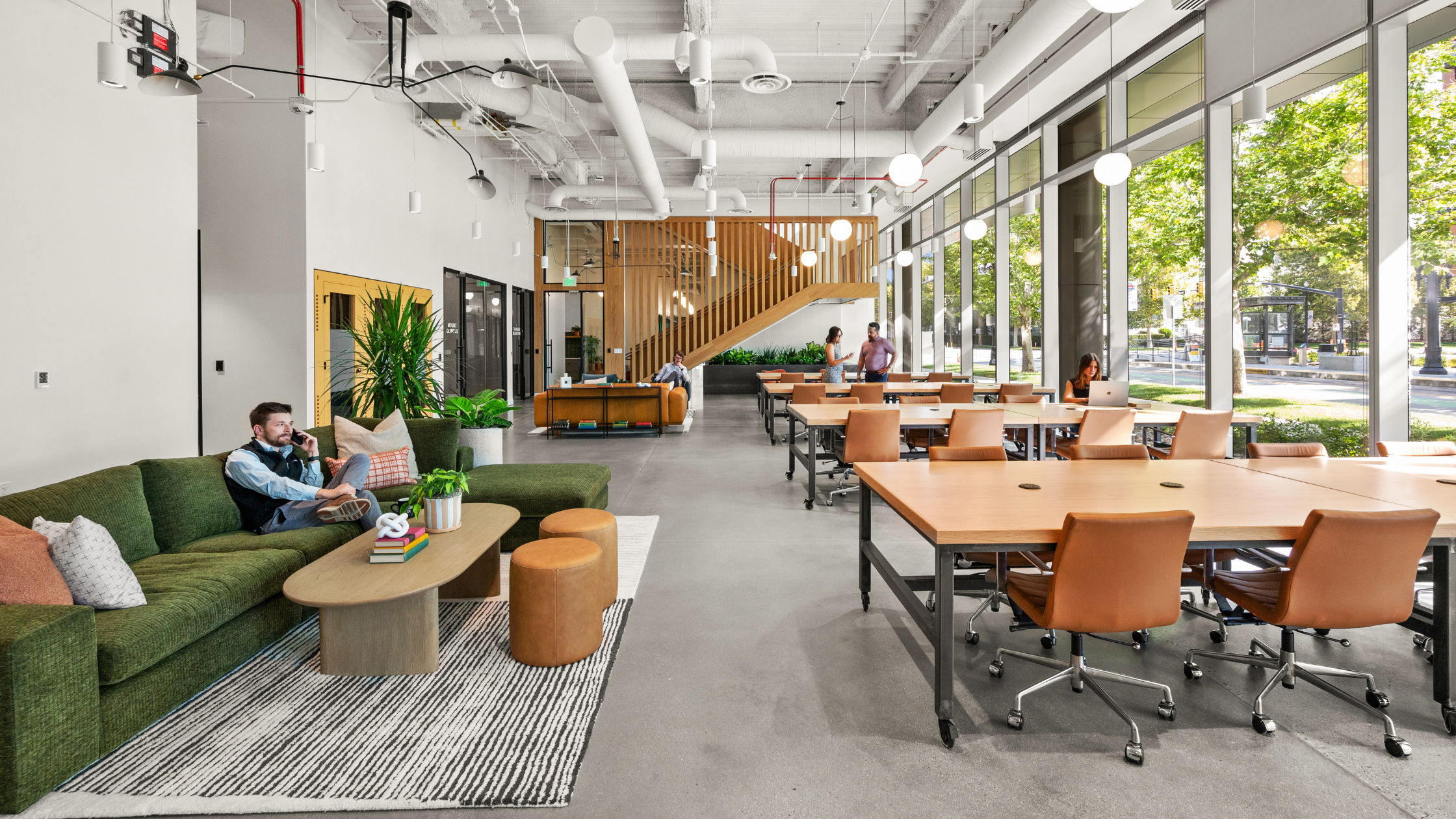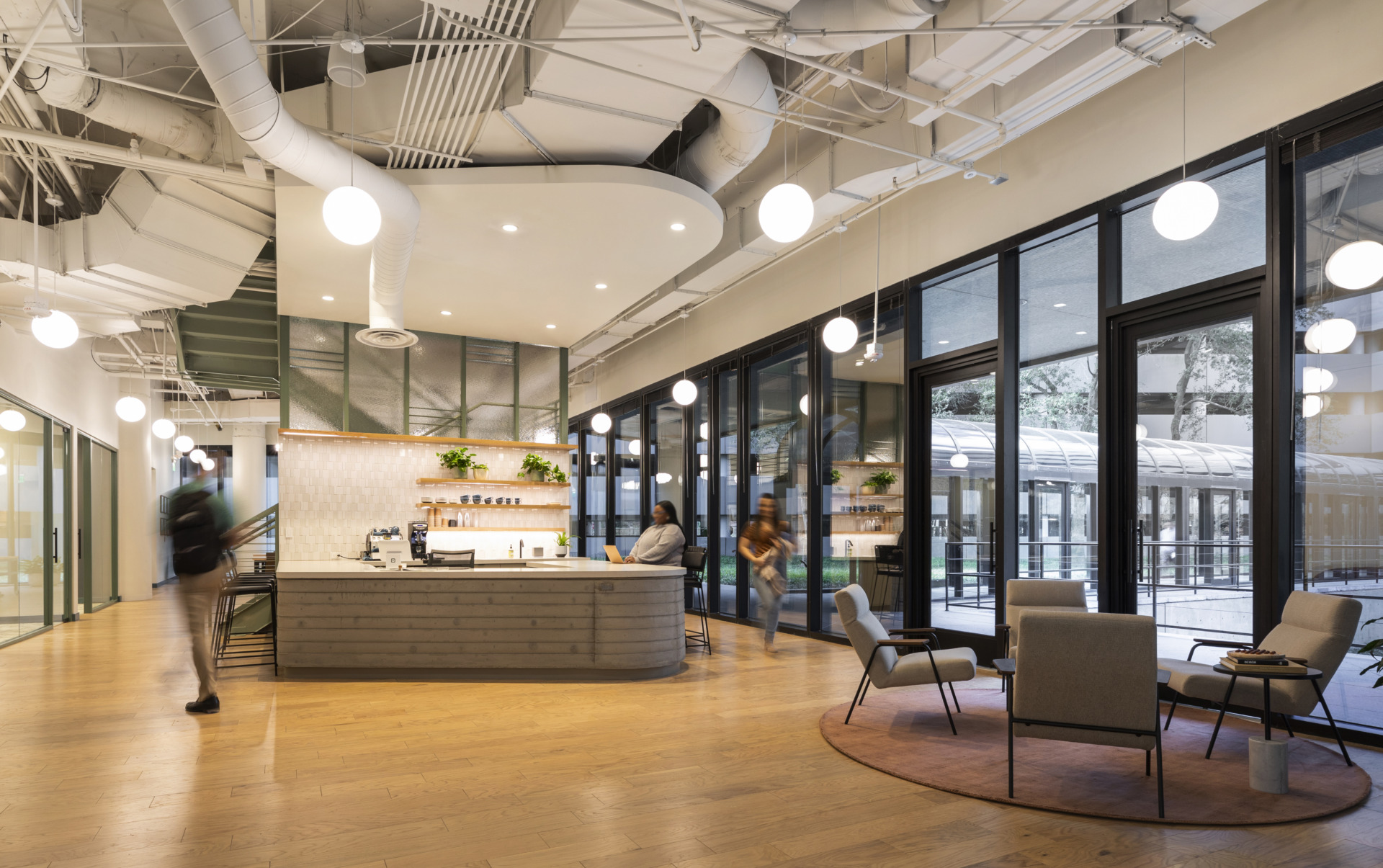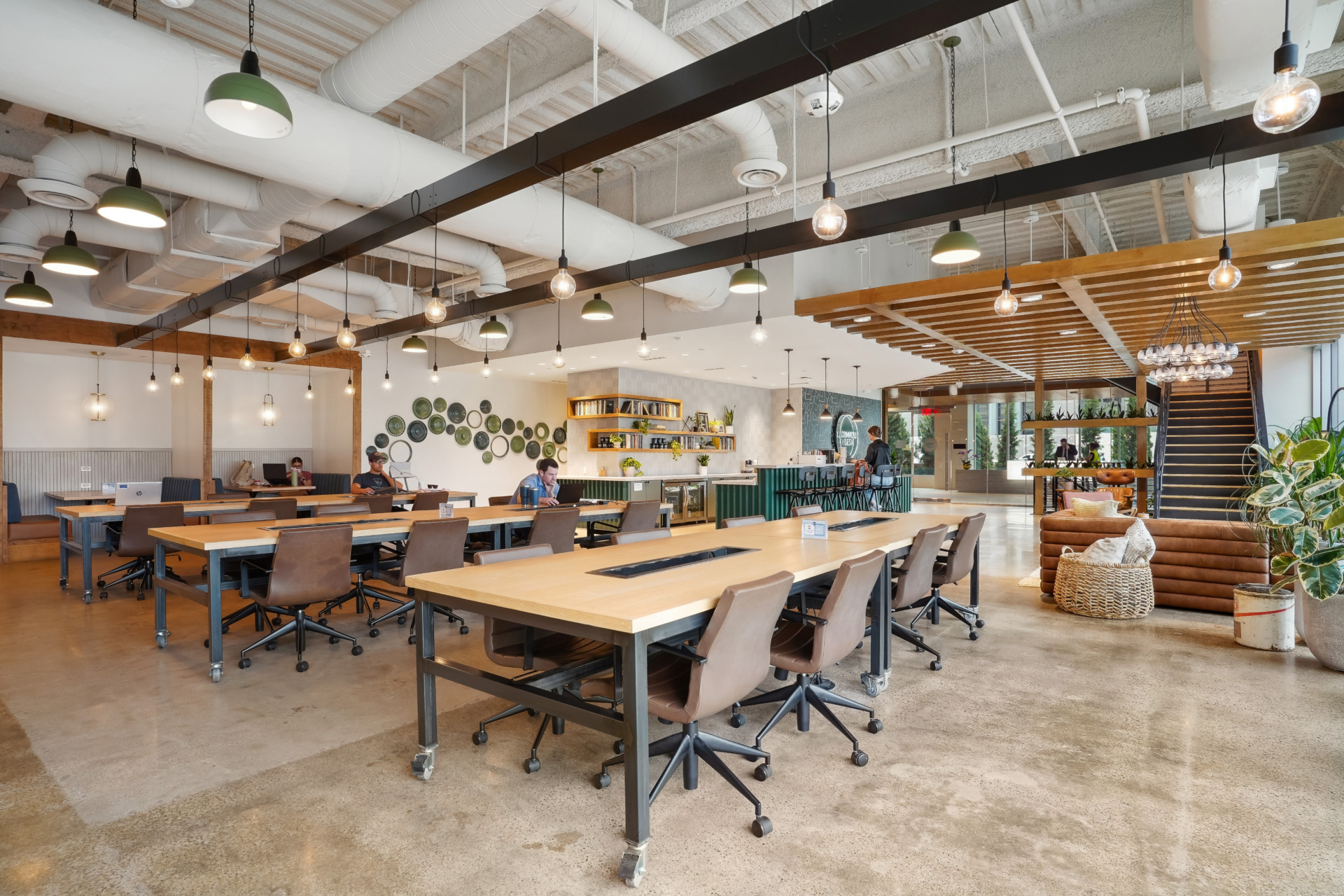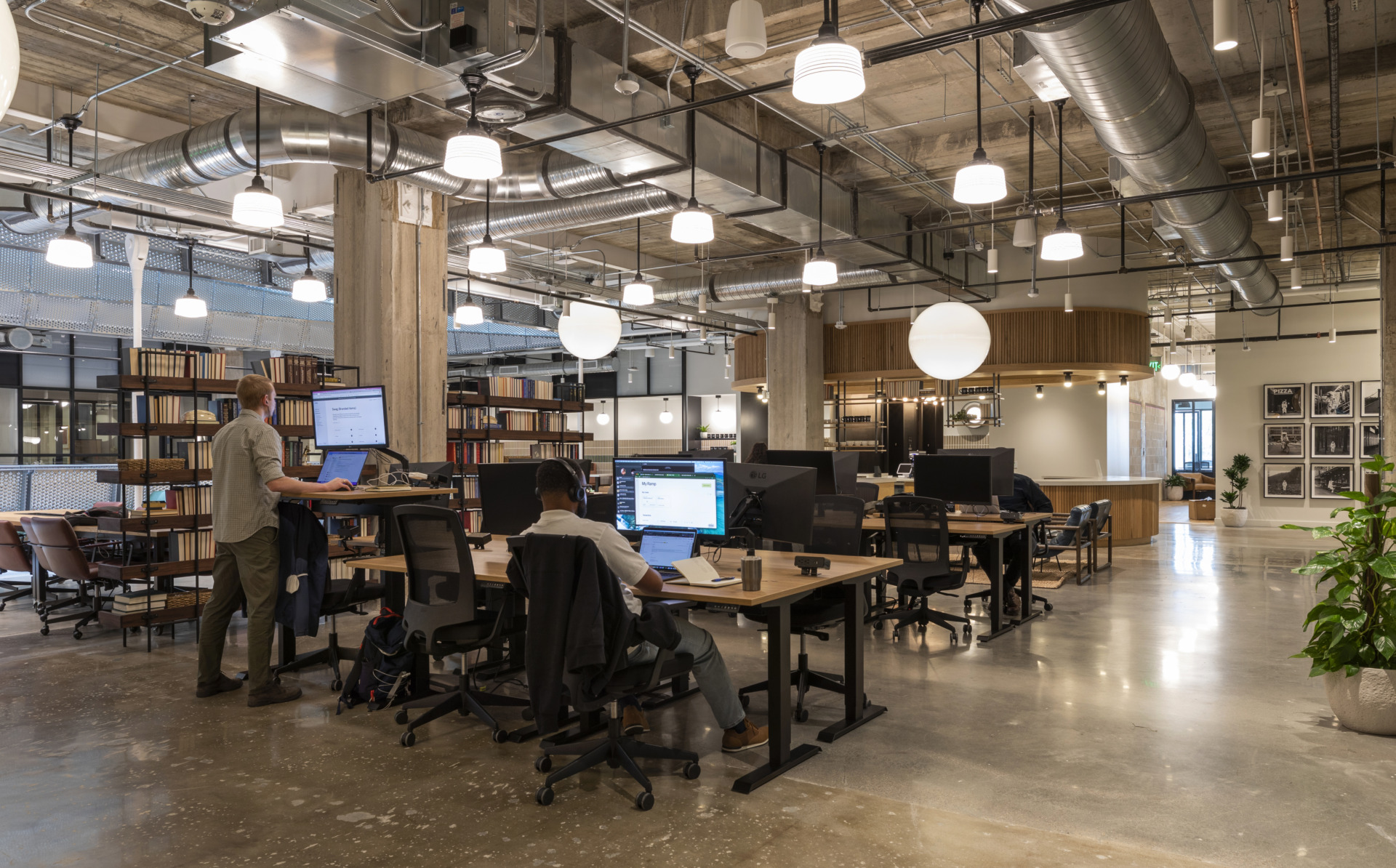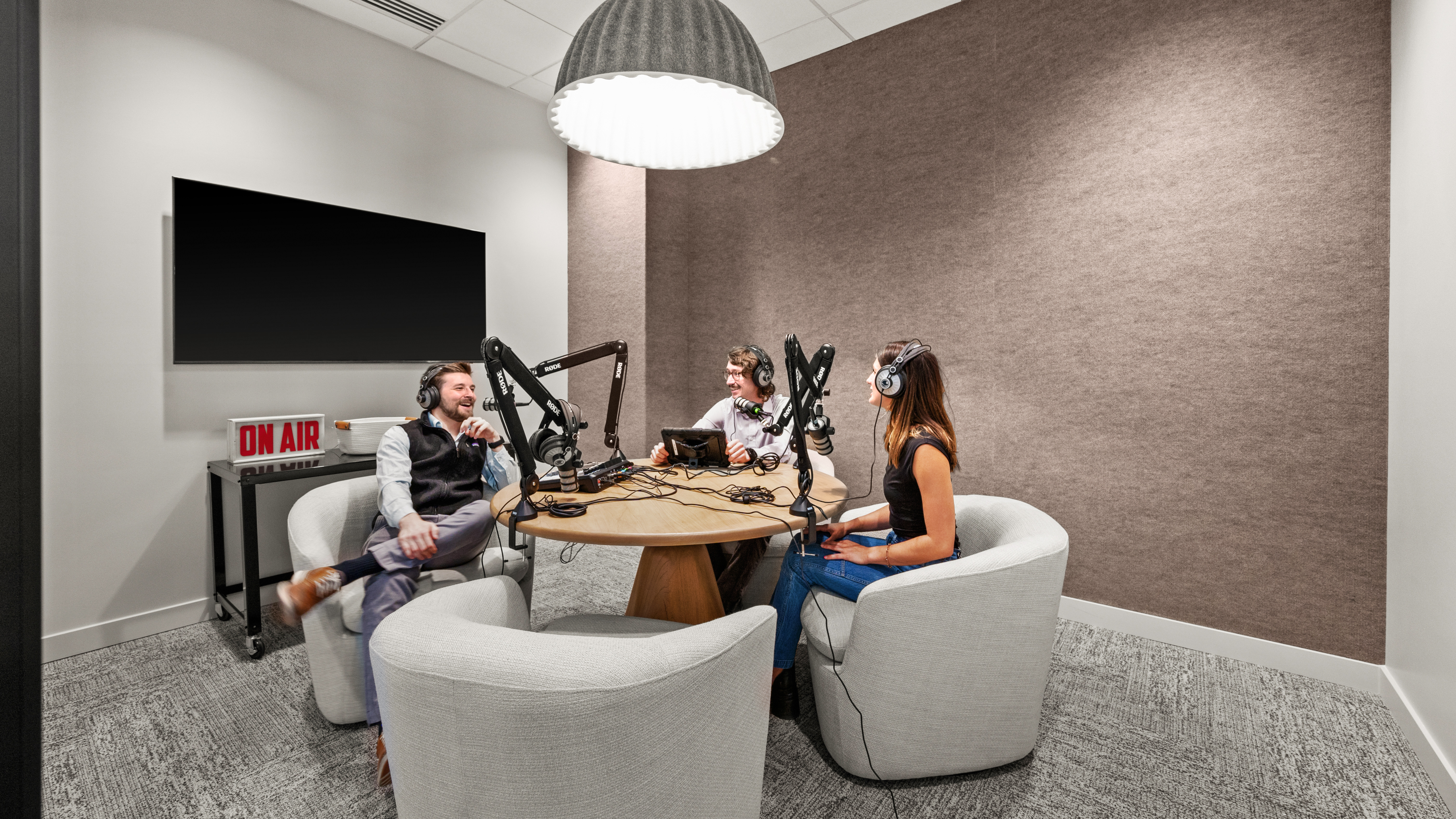We’re four years past the COVID crisis and many aspects of life have returned to normal. However, some of life’s elements won’t ever be the same and the way we work is surely one of them. For the hybrid, flexible professional, the prevalent return-to-office mandates are a dreaded command coming down from their leaders, and forward-thinking business folk everywhere are wondering, “What can I do to keep working flexibly?” At Common Desk, we get it, which is why we’re committed to creating coworking spaces that are professional, amenity-dense, and filled with like-minded workers. In our 12 years of running multiple office communities across Texas, North Carolina, and now Utah, we’ve learned that people are the happiest and most devoted to their trade when they can tailor the workweek to fit their needs and focus style.
Why does hybrid work gain so much media attention? Why is it disputed so hotly? While we can only speak for ourselves, we think it’s due to a misunderstanding of what hybrid work is and can be in the business arena. Hybrid work isn’t the employees’ excuse to sit around in their pajamas. It’s not your team acting like rebellious teenagers. Hybrid work is the work style of the future, where professionals everywhere recognize that while work is important life is short, and the luxuries of modernity and technology allow us to do good work on our terms. Today, we’re getting technical and breaking down the ins, outs, and questions regarding hybrid, flexible work options, and Common Desk’s offerings.
What is Hybrid Work?
Let’s lay the definition for hybrid work. Hybrid work is a versatile work style where individual employees or entire teams work partially in a set office and partly remotely – whether in the comfort of their own home, a coworking space, or their local coffee shop. While remote work was popularized due to the office shutdowns in 2020, some companies were already toying with an alternative schedule, where their employees engaged in what was called ‘WFA’ — work from anywhere. While COVID was unimaginable for many, it forced the rest of the world into a hybrid or fully remote work dynamic to protect the well-being of their employees. Despite how new hybrid work seems, it’s not an invention of the 2020s. In fact, according to Economist Impact, the model can be traced back to the 1960s but didn’t take off until the 70’s and 80’s. Attributed to the rising costs of commutes, demand for substitute work arrangements sprung up in the corporate world in the UK, Europe, and Japan. By the mid-90s, famous companies like IBM and AT&T sought out office-less workspaces as a way to save on real estate expenses. For more information on the history of hybrid work, check out Economist Impact’s article here!
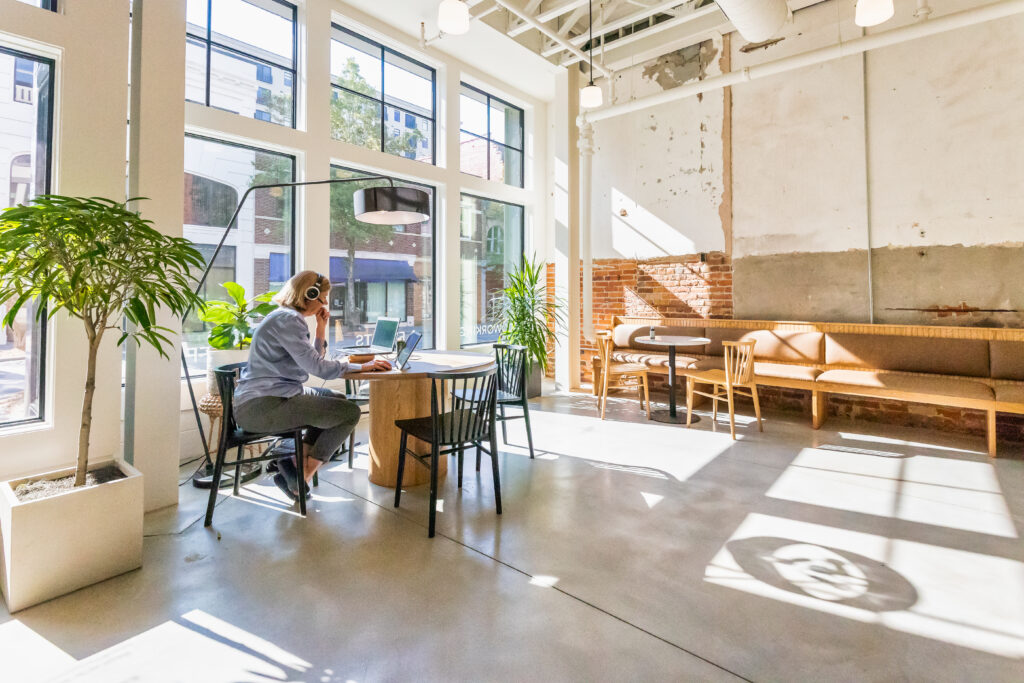
Is it worth it?
Now that we have an understanding of hybrid work, its origins, and growth in society, we can ask an important question. Is it worth the fuss and fight to keep flexible work schedules? In our mind, that’s a no-brainer. It’s a resounding YES from Common Desk, but let’s examine some of the good feedback surrounding hybrid work.
- Work-life balance skyrockets when companies adopt hybrid workflows. Employees are generally more productive and focused on their role responsibilities when they’re able to get private affairs checked off their to-do lists, avoid stressors like long commutes and traffic, and customize their work environment to their unique preferences.
- Hybrid employees typically report higher job satisfaction. When individuals can edit their externals to their preferences and simply focus on the requirements of their role description, they find more contentment in what they were hired to do with added factors shaved off their mental list.
- Flexible work models contribute to less stress in their employees’ lives. From improved work hours to avoiding traffic jams, public transport, and personal responsibilities like picking up children from school or after-hours appointments, hybrid employees generally agree that they’re less stressed in their day-to-day lives with hybrid models.
Some other considerations regarding flexible work include: Running a hybrid workplace is overall cheaper for business owners, can boost the brand’s image as a forward-thinker, attracts sharp talent that appreciates a flexible environment and contributes to employees that feel empowered by the ability to control their personal and professional life.
What are the Cons?
- In some cases, the mental health of employees has suffered. Hybrid employees reported feelings of isolation and social stress as they spent most of their time at a home office or in a coffee shop that, while surrounded by others, still felt lonely without shared common interests as their colleagues.
- Maintaining company culture can be more of a challenge for leadership teams. With many groups gathering over video conference calls, in-person team bonding, briefs, and relationships can suffer and require more intention to cultivate.
- Hybrid employee engagement can also sometimes suffer. While some personalities felt more engaged and able by controlling their schedule, employees who feed off the energy and inspiration of their teams felt less engaged and unmotivated without the connection of an office setting.
Some other considerations regarding flexible work include: The physical health of employees can be impacted negatively, as flexible or remote work is typically more sedentary, and boundaries between personal work and professional work can sometimes blur, making for an overload of tasks and burnout.
What are the types of hybrid work models?
As mentioned, hybrid work can look different depending on the industry and individual. While some roles allow for simple coffee shop visits, other industries, those that require more technology or discretion, call for more private environments. Below are some examples of the common hybrid setups you’re likely to encounter.
Fixed hybrid work model
In this category, company leaders make the decisions and set the tone regarding flexible work. Typically, a certain amount of days or hours are allotted to employees to work from home. For example, Tuesday and Thursday may be the only permitted days out of the office and only a home office may be acceptable. If not, employees may be required to stay at the office during the week. Fixed hybrid models allow employees the weekly reprieve of an office environment, but still provide a helpful, defined structure that keeps all teammates on the same page.
Office-first hybrid work model
Here, the company office space is the priority but includes weekly or monthly ability to work from the location of employee choosing. Typically, the where of the individual doesn’t matter as much to company leadership. Whether from their home office or favorite cafe, employees can choose the whereabouts of their day, a handful of times throughout the month, but regular office attendance is still a non-negotiable.
Remote-first hybrid work model
Ideal for most modern professionals, the office is on the go, and up to the individual as to where they work. Whether it be on a trendy walking pad at their home office or the local library, employees aren’t required to report to a physical office. While some companies may still have one, it’s not the central nexus point for the different departments and individuals in the business. In some cases, which is a frequent occurrence for Common Desk’s community teams, businesses will rent an office or conference room space from flexible office providers and meet monthly or quarterly. As the business landscape advances post-COVID, many upcoming businesses across industries have opted for remote-first work models.
Hybrid Work at Common Desk
As modern workspaces advance, coworking has become the ideal operation for remote and flexible workers. Due to its cost-effective memberships and daily offerings, full-service amenities, and opportunities to meet different types of professionals, coworking stands up to the traditional office space and can be found cropping up throughout cities and neighborhoods internationally as the demand grows. Giving professionals the ability to customize their workspace, while also combating workplace loneliness and rigidity, is one of the most attractive things about coworking and a huge reason we love this business.
That said, Common Desk welcomes all kinds of professionals. From suites that house 30+ corporate members to solopreneurs, busy students, and visiting day passers, we’ve seen it all and have memberships and solutions to satisfy each genre of worker, especially those with fully remote or hybrid schedules. Each of our Common Desk locations has the same list of amenities necessary for flex business people to conduct their daily to-do’s. Whether stopping by for a single visit, signing up for the infamous shared desk membership, or snagging a private office, patrons can expect the following perks to greet them:
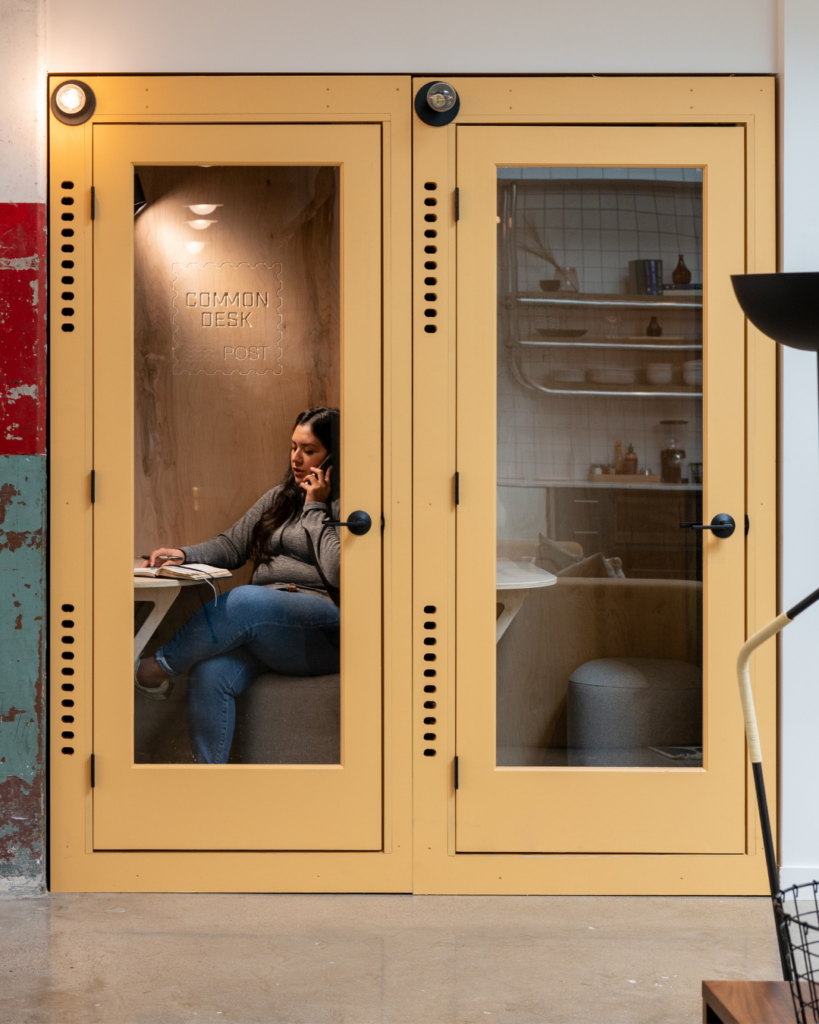
- Fast Wi-Fi
- Complimentary craft coffee and tea provided during business hours
- Chat booths with picture-perfect lighting
- Tables, booths, soft-seating, and lounge spaces to work however you see fit
- A bookable wellness room whether you’re a nursing mom or need a quiet moment to yourself between meetings
- Weekly community events and networking opportunities to meet professionals in your neighborhood
- Smiling, helpful hospitality teams, and more!
In Closing
For the flexible professional, it’s not time to panic quite yet. Though conversations regarding the return to office are circulating worldwide, Common Desk and coworking can be the perfect middle ground between employers and their teams. Providing leadership groups with the list of amenities, costs, and community culture of Common Desk is a fantastic way to show your colleagues and boss that your work remains professional and productive, no matter where it occurs. Common Desk prides itself on providing engaging, positive, and dynamic work solutions for hybrid workers whether they’re IT professionals or family therapists, and judging by our list of pleased members in thriving businesses, we dare say they agree!
If you’ve been contemplating giving coworking a test drive for your hybrid or fully remote schedule, book a tour, or feel free to speak to our knowledgeable customer experience team at 214-216-6913. For all of us at Common Desk, long live the hybrid work model and we’ll see you soon!



